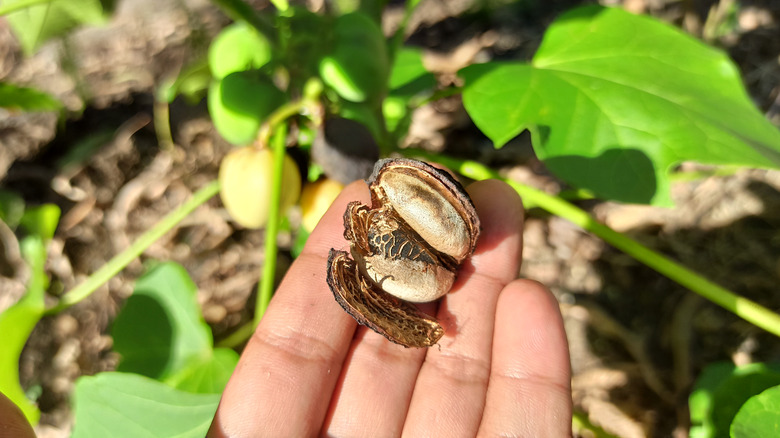The Scary Reason Jatropha Is Also Called 'Purge Nut'
A lot of scary things grow on this planet. Ingesting just a single seed from the castor oil plant can kill a child (via Good Housekeeping), lilies and poinsettias are extremely toxic to cats (via ASPCA), contact with poison ivy can cause severe rashes, and tasting a beach apple might just lead to asphyxiation and death (via Atlas Obscura).
As if that isn't already bad enough, many of these plants look relatively harmless, or resemble plants we know to be harmless. This is especially the case with berries and fruits. Jerusalem cherries, which look like cherry tomatoes, can cause stomach cramps and affect your heartbeat, according to Healthline.
Unfortunately, the best way to avoid illness or death by one of these dangerous plants is to stick to eating fruits and veggies you know for sure are safe. Eat some wild strawberries, but leave the mushrooms alone. Even something that looks as harmless as the jatropha nut can have some devastating consequences.
Eating the "purge nut" might just kill you
Jatropha ranks pretty high on the list of the world's most dangerous fruits. It's nicknamed the "black vomit nut" and "purge nut," which gives a pretty good idea of what eating it does to you (via 10 Most Today). Those who eat it suffer from severe throat and abdominal pain. Someone who has eaten a greater amount might also become dehydrated and experience cardiovascular collapse as their body fights the poison.
Although jatropha can be found in just about any tropical or subtropical environment, the Indian variety has proven most dangerous (via Medical Journal Armed Forces India). The small berries of the plant attract small children, who then succumb to the ricin contained in the seeds. Oddly enough, Down to Earth says jatropha can also be used as a laxative, a painkiller, and a way to heal wounds. However, these medicinal uses require careful control of the seeds. In other words, for your own health, don't try jatropha at home.

